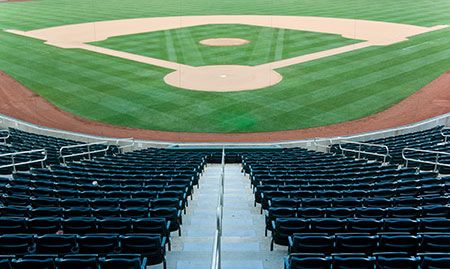Up to bat: Lets talk ballpark estimates for your new veterinary hospital
Use this equation to estimate general costs for your new building or leasehold.
Michael Flippo/stock.adobe.com

It's not likely you'll need seating for 30,000 people in your new veterinary hospital, at least.
Crunching numbers have you screaming obscenities at your calculator? Yeah, we get it. That's why we put together this step-by-step method for estimating building costs for a new freestanding veterinary practice. (Or skip to the bottom of this article to calculate costs for a leasehold.)
- Make a list of every room that you need with the exception of the treatment area
- Assign sizes to each of the rooms on your list. Remember, you're ballparking here. So if you're off a foot or two, it's not the end of the world. Just plow forward. To get you started, you could put your exam rooms on the list at 10 feet by 10 feet (100 square feet) to work with some round numbers.
- Make a list of every treatment and induction station that you need.
- Assign each treatment station a size of 10 feet by 12 feet, or 120 square feet.
- Add the square footages of all the rooms and treatment stations. Then multiply the entire list by 1.5 to get total estimated square footage. (Just as a point of comparison, the average size of winners in the 2019 dvm360 Hospital Design Competition was about 7,000 and the smallest was 2,100 square feet.) Note: This factor (1.5) is greater than an architect would use to make the same calculation, but you may not know exactly how big a room really needs to be-and people tend to underestimate. It's better to be on the higher end for your early estimates.
- Now that you have a good guess at square footage for your project, multiply that number by a sample cost per square foot to estimate the construction costs of the project. Keep in mind, the cost per square foot can really vary depending on your region, the materials you pick, your labor costs and so on. So you'll really need to talk with an architect to refine your budget. But at this stage, let's use $300 per square foot.
- Bad news: You're not done. Beyond construction costs, you'll need to pay financing costs and professional fees; buy equipment and furnishings; and set aside some funds for contingencies. A rough rule of thumb is that these costs will run about 35 percent of the construction costs. So multiply your total construction costs by 1.35 and you'll have your ballpark project costs.
Don't worry, we didn't forget you key players going the route of the leasehold. Here's your step-by-step process.
- Follow steps 1 - 5 above to determine the estimated square footage of your new practice space.
- Leaseholds cost less per square foot. So multiply your total square feet by $140 per square foot to get an estimated build-out cost.
Add 35 percent to cover additional costs like financing, equipment and furnishings, and other non-construction costs.
Related Content